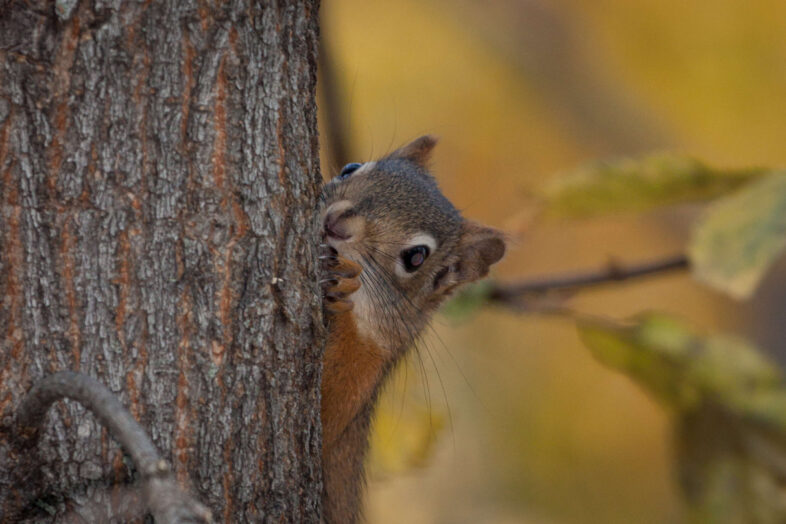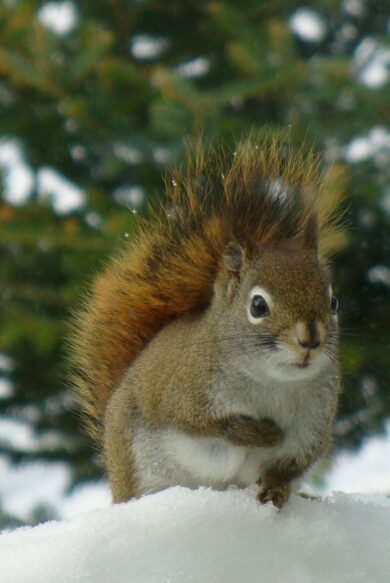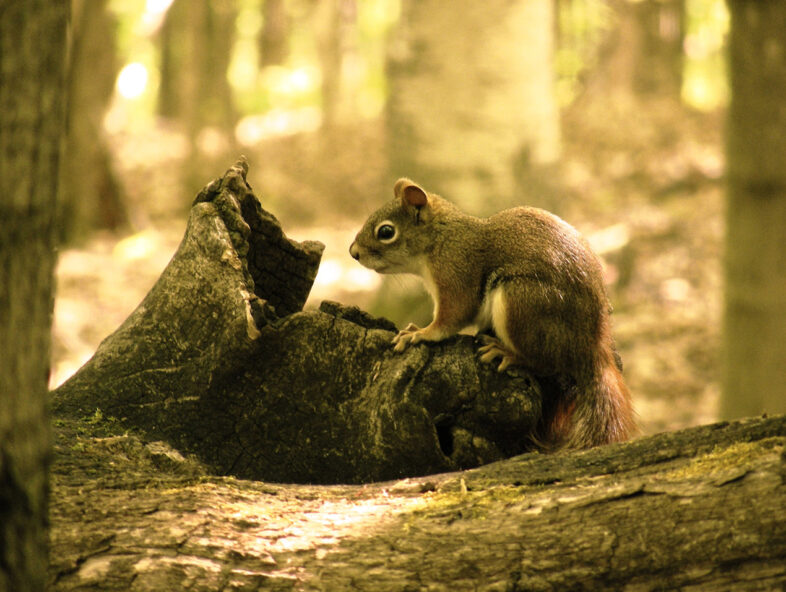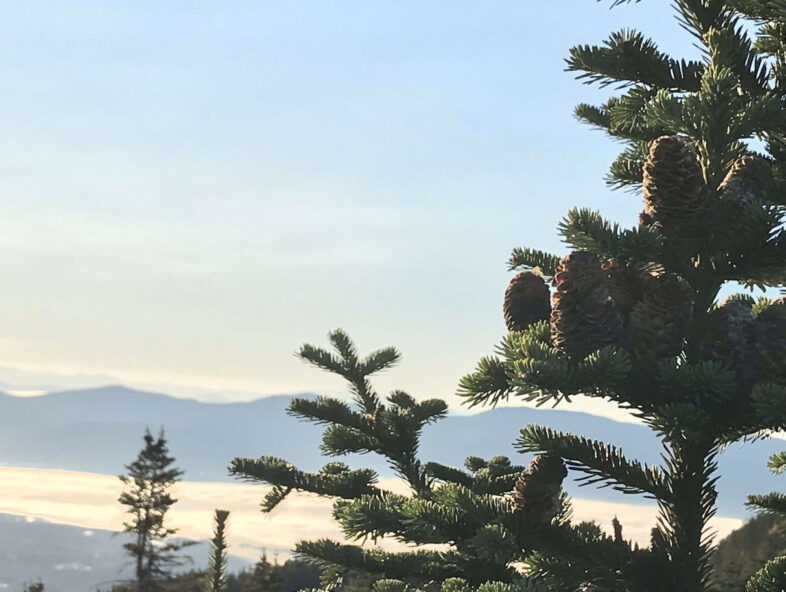Norwich, VT – Coneward bound: New study finds the abundance of seeds produced during tree masting events allow the American Red Squirrel, a known nest predator, to expand its range, spelling disaster for nesting songbirds.
A new study published in Diversity and Distributions, authored by Vermont Center for Ecostudies (VCE) Dr. Michael Hallworth, along with other VCE staff and collaborators from the United States Geological Survey; University of Massachusetts, Amherst; Northeast Climate Adaptation Science Center; and National Audubon Society, looks more closely at how tree seeds, such as cones and American beech nuts, govern where red squirrels occur within the landscape. In lean cone years, most red squirrels are found in the transition zone where the lower elevation northern hardwood forest is interspersed with the high elevation montane spruce-fir forest. However, following the approximately biannual boom in seed production known as mast years, the red squirrel’s elevational limits expand considerably, and squirrels can be found anywhere from the balsam fir-dominated treeline at high elevations to hardwood forests in the valleys.
“We’ve known that red squirrels and other small mammals survive the winter at higher rates and produce more young following mast years,” says Hallworth, lead author of the study, “resulting in more red squirrels in the forest in some years and fewer in others.”
While this study confirmed that red squirrel populations increase following mast years, it also found that the elevations where the squirrels are found expand dramatically following mast events and contract back into their preferred habitat when seed resources are scarce. Interestingly, Hallworth notes “Red squirrels appear to anticipate the seed bonanza and expand their elevational range months before seed production.”
The study used cone and seed surveys conducted by VCE staff and volunteer community scientists across New England and eastern New York to predict when mast would occur in northeastern forests using climate predictors. The mast predictions allowed the researchers to evaluate how mast production affects the northern forest community. The impact of abundant seed resources reverberates through the ecosystem, affecting more than just red squirrels.
When red squirrels move beyond their normal elevational range, it can spell trouble for many breeding songbirds. “Red squirrels are significant avian nest predators across the northern forest,” Hallworth says. The study found that when red squirrel abundance increases, the reproductive success of songbirds declines. These impacts are not isolated to a single species. The study focused on three songbird species that nest across an elevational gradient in the northeastern United States, from the treeline of high peaks to the floor of hardwood forests.
“This study gives us a behind-the-scenes view into the role that predation plays in songbird communities of the mountains—a logistically challenging place to conduct research,” notes Dr. Jason Hill, a quantitative ecologist at VCE and co-author of the study. “This exciting new understanding of how episodic predation drives songbird recruitment in the spruce-fir zone should help us better understand the vulnerability of these populations to other stressors, including climate change.”
Many songbird species are at risk due to climate change, but high-elevation species such as Bicknell’s Thrush and Blackpoll Warbler, two species included in the study, are especially vulnerable. According to data collected from VCE’s Mountain Birdwatch program, both have experienced population declines of around 45% since 2010, and scientists expect their numbers to continue dwindling in the Northeast in the coming decades. Increased predation amplifies existing stressors and challenges these species’ recovery.
“For migratory birds like Bicknell’s Thrush and Blackpoll Warbler, which face challenges unique to the mountains of the northeast and interact with threats as they travel across the hemisphere to complete their life cycles, it is imperative to understand the factors that could be impacting their populations,” says Dr. Bill DeLuca, Senior Migration Ecology for the National Audubon Society and co-author of the study. “This work helps us connect the dots across the ecosystem to better understand what determines successes and failures during the breeding season.”
Ultimately, a better understanding of the relationships between red squirrels, songbird reproduction, and tree mast will help inform northern forest management and songbird conservation. “In this era of escalating global change, information is power,” said senior author Dr. Toni Lyn Morelli, Research Ecologist at the U.S. Geological Survey Northeast Climate Adaptation Science Center. “If we can better understand species responses to their environment, we can better help them to adapt to global change and ultimately improve their conservation.”
-30-
Images Available for Use:
Use of the provided images is protected by copyright and permitted only within stories about the content of this press release. Redistribution or any other use is prohibited without express written permission of the Vermont Center for Ecostudies or the copyright owner. For high-resolution versions, please contact .

© Kent McFarland

© Steve Faccio

© Steve Faccio

© Michael Hallworth
